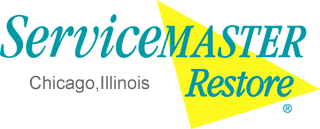
Mold growth is a natural outcome of water damage. After a leak or flood, water can soak into your flooring, baseboards, furniture and drywall. In fact, drywall is one of the primary places where water can soak in and lead to mold damage.
In the hours and days after a leak or flood, what are the signs of water damage and related mold growth? To help you deal with wet insulation and drywall, here’s a rundown of the things to look for.
Signs of Mold Damage in Drywall
The goods news is signs of mold damage are relatively easy to see — if you know what to look for. Here are the three main things to keep an eye on if you’re concerned about mold growth in your drywall.
- Odors: You likely know what mold smells like. It’s a musty odor that gives off an earthy scent. If you’ve ever walked through a wet forest after a heavy rain, that’s a little bit what mold smells like. If you’ve experienced a leak or flood, the telltale odor of mold is a sign you need to immediately identify where the growth is located so it can get removed. A water removal expert should provide odor removal services as well as mold remediation.
- Warped or deteriorating surfaces: Specific to drywall, watch for bubbles, warping or similar deterioration of your walls. When mold is growing, it begins to attack your drywall, which can make your walls start to crumble. Bubbling and warping are early signs of water damage to drywall, and the more robust deterioration may take place at more advanced stages of mold growth in wet insulation.
- Stains and discolorations: Early on after water damage, look for any stains or discoloration on your walls. Stains related to water damage are often brown or yellow. They may start as small spots that grow into something much larger. If you see these types of stains or discoloration, search underneath them for mold growth.
Naturally, there are other signs of wet insulation that need attention, but the signs listed above are the easiest for everyday homeowners to notice.
Next Steps After Finding Signs of Mold Growth
Stopping mold growth includes two simple steps — remove moisture and dry everything out. When you’re worried about mold damage from moisture, it’s best to use air movers, air scrubbers and dehumidifiers to pull moisture out of the air and anything in the damaged area.
If mold has already started to grow in wet insulation and drywall, it may be necessary to pull those damaged panels out of the home or structure so they can get replaced with clean drywall. A professional can help you make these important decisions about how to handle mold damage.
Once the mold is removed from the drywall, it is crucial to complete mold remediation. Mold spores can easily travel through the air and if they latch to another location in your home, mold will begin to grow elsewhere. Remediation treats the affected areas to eliminate the chances of mold growing back.
Why Choose ServiceMaster of Lincoln Park?
When you’ve experienced water damage, call on the team at ServiceMaster of Lincoln Park. We provide comprehensive water damage restoration services that can bring you peace of mind and return your home or commercial building to its former condition. Because we understand the urgency of water damage and preventing the resulting mold growth, we respond with the urgency your situation requires.
Contact us today to learn more about mold growth and how to prevent it.

